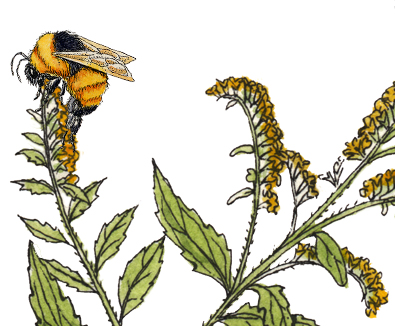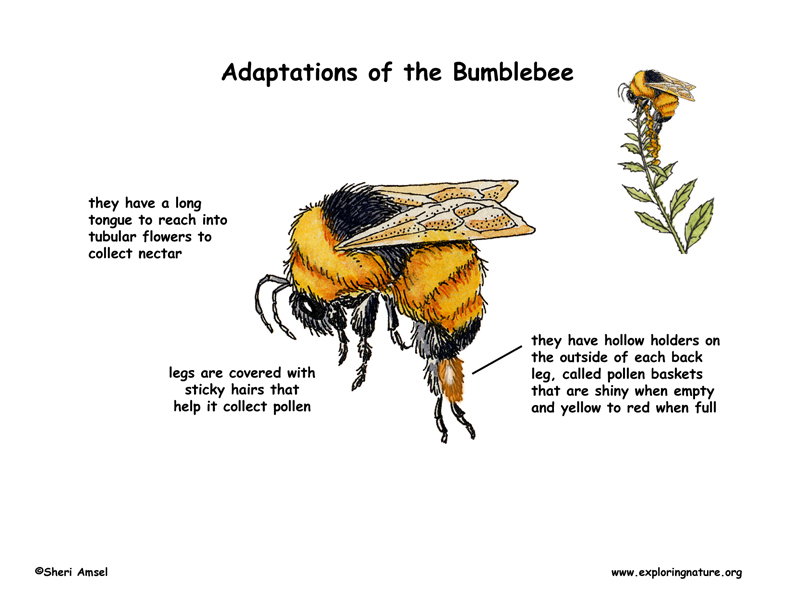

Adaptation in a population of living things happens as a result of an adaptive trait. This is any inheritable trait that increases its survival rate so that it can live longer, reproduce longer, and have more offspring (that also have that trait). Adaptive traits can improve an animal's ability to find food, make a safer home, escape predators, survive cold or heat or lack of water.
The bumblebee's legs are covered with sticky hairs that help it collect pollen. Workers and queens actually have hollow holders on the outside of each back leg, called pollen baskets. They are shiny when empty and yellow to red when full. They also have long tongues with which they can reach into tubular flowers to collect nectar. These adaptive traits are physical adaptations.
Bumblebees have an interesting behavior adaptation. When they want to communicate with other bees about a food source they dance. Scientists have discovered special movements bees do to communicate different kinds of messages to other bees of their hive.
For Discussion and Critical Thinking:
Bees adaptive traits that help it find food, reproduce and communicate with its hive.
1. Why do you think honeybees communicate by dancing instead of making a sound like a coyote howling?
2. Can you think of other animals that collect nectar from flowers. Name two and how their physical traits help them with this task.
3. Name two other insects with different diets and the mouthparts they have to feed.
4. Do you have any physical traits that help you survive? Discuss one.
When you research information you must cite the reference. Citing for websites is different from citing from books, magazines and periodicals. The style of citing shown here is from the MLA Style Citations (Modern Language Association).
When citing a WEBSITE the general format is as follows.
Author Last Name, First Name(s). "Title: Subtitle of Part of Web Page, if appropriate." Title: Subtitle: Section of Page if appropriate. Sponsoring/Publishing Agency, If Given. Additional significant descriptive information. Date of Electronic Publication or other Date, such as Last Updated. Day Month Year of access < URL >.
Amsel, Sheri. "Adaptations of the Bumblebee" Exploring Nature Educational Resource ©2005-2024. December 14, 2024
< http://www.exploringnature.org/db/view/1687 >

